This article was medically reviewed by Luba Lee, FNP-BC, MS. Luba Lee, FNP-BC is a Board-Certified Family Nurse Practitioner (FNP) and educator in Tennessee with over a decade of clinical experience. Luba has certifications in Pediatric Advanced Life Support (PALS), Emergency Medicine, Advanced Cardiac Life Support (ACLS), Team Building, and Critical Care Nursing. She received her Master of Science in Nursing (MSN) from the University of Tennessee in 2006.
There are 11 references cited in this article, which can be found at the bottom of the page.
This article has been viewed 34,905 times.
A scald is slightly different from a burn, in that it’s caused by something wet (like water or steam) instead of dry heat. In spite of this difference, the treatment for scalds and for burns is essentially the same. Fortunately, this treatment is very simple and effective in most cases. If you’ve been scalded by a hot liquid, the first thing to do is apply first aid to the wound and seek medical help if needed. Then, all you have to do is take care of the scald at home while it heals!
Steps
Providing First Aid for the Initial Scald
-
1Stop the scalding process and remove any clothing from the area. Immediately move away from the source of the heat to prevent the scald from getting any worse. Then, remove any clothing or jewelry that’s near the scald or on top of it. This will keep the scald visible and prevent circulation to the area from being cut off if it starts to swell.[1]
- Don’t remove any clothing or accessories that are stuck to the skin; these will have to be removed by a medical professional to avoid causing any inadvertent damage.
- Accessories that may need to be removed include rings, necklaces, bracelets, or any other items that may cut off circulation to the affected area.
-
2Run the scald under cool water for at least 20 minutes. This will immediately soothe the injury by cooling it down and help prevent any further injury from the scald. If the pressure of the water on the skin is uncomfortable, wet a towel in the cool water and lay it gently onto the scalded area to cool it.[2]
- Don’t use ice or ice cold water to cool the scald, since the ice may actually cause additional damage to the tissues in your skin.
- You only need to run your scald under cool water as part of the proper first aid treatment for minor scalds. You don’t have to repeat this step throughout the day after you’ve done it the first time.
Advertisement -
3Refrain from putting any cream or gel on the scald at first. Although you may want to apply moisturizer or a cooling lotion to the scald, these kinds of substances will actually seal heat in the burned area and end up causing even more harm. Stick to only running cool water over the scald or using a cool compress for at least the first day of treatment.[3]
- The 1 exception to this rule is antibacterial soap, which you will need to use to clean the burned area.
-
4Cover the affected area with cling film and assess the scald’s severity. Apply a layer of cling film over the area instead of wrapping the film around a limb to avoid cutting off circulation. Then, visually examine the scald through the film to determine how bad it is. If it’s a minor or first-degree scald, it probably doesn’t require professional medical treatment.[4]
- As an alternative, you can use a clear plastic storage bag. You’ll want to use a transparent covering, such as a clear plastic bag or cling film, in order to be able to visually assess the scald while still covering it to prevent additional injury or infection.
- A first-degree scald will be painful and sensitive to the touch, slightly swollen, and red.
- A second-degree scald will be red, swollen, and painful, and will be accompanied by blisters and some white, blotchy areas of the skin.
- A third-degree scald will include partial numbness and black or white spots on the scalded area of skin.
-
5Seek medical help if the scald is deep or larger than your hand. A deep second- or third-degree scald will require medical treatment by a professional. If it’s a first-degree scald but is larger than your hand, it’s also serious enough to warrant a trip to the hospital.[5]
- Medical treatment for serious scalds and burns may include pain and anxiety medications, burn creams and ointments, specialty wound dressings, drugs to prevent infection, and water-based treatments to clean and stimulate wound tissue (e.g., ultrasound mist therapy). Your doctor may also give you a tetanus shot.
- If you’re unsure at all about whether or not to go to the hospital, remember that it’s always a better choice to go to the hospital when the scald’s not that serious than to not go to the hospital when it is serious.
-
6Use over-the-counter medications for pain relief as necessary. You can use over-the-counter NSAIDs like ibuprofen (e.g., Advil, Motrin) or naproxen (e.g., Aleve) to help relieve pain and reduce inflammation. If you cannot take NSAIDs, take acetaminophen (e.g., Tylenol) to help with the pain.[6]
- Make sure to follow the manufacturer’s instructions very closely when taking any OTC medication.
Caring for the Scald at Home
-
1Keep the area clean to ward off infection. Starting on the first day of your home treatment, use soap and cool water to wash the scalded area and prevent any bacterial infection from taking root. Be very gentle when washing the scalded skin so as not to cause any further damage to the area.[7]
- Wash the scalded area at least once a day to adequately protect it from infection.
- If the scald is on your hand or arm, avoid using that arm in tasks that could expose it to bacteria, such as cleaning or cooking.
-
2Apply a lotion or ointment to the scald after it cools. If it’s only a first-degree or superficial scald, applying a lotion or ointment can help the scald heal faster. Scalded skin heals faster if it's kept moist. If you use a medicated ointment, it can also help control pain and prevent infection.[8]
- Apply the lotion or ointment several times a day.
-
3Cover the scald with a loose, sterile bandage to keep it clean. This protects the scald from dirt and germs that could cause an infection. Additionally, it locks in the moisture from your lotion or ointment to keep the scald moist, which will help it heal faster.[9]
- It's okay to leave first- or second-degree scalds uncovered after the first 24 hours. Unless the scald has open blisters or broken skin, it's safe to leave it uncovered.
- If your scald has broken skin or an open blister, you should cover it.
-
4Avoid scratching the scalded skin or popping any blisters that develop. Doing this may lead to the skin opening up, which will put your scald at a higher risk of becoming infected. Not to mention that opening the skin this way will also slow down the healing process and possibly leave you with a more noticeable scar.[10]
- If your scalded develops any blisters, see your doctor to have them safely removed.
-
5Keep the scalded area out of the sun if possible to keep it comfortable. The scald will be sensitive to heat for a while at first, so keeping it out of the sun and in the shade will go a long way towards keeping it comfortable. This will also minimize the chances of the scald being made worse by the sun.
- If you can’t avoid being in the sun, use loose-fitting clothing to keep the scald covered.[11]
-
6Watch out for signs of infection. If your scald begins to look infected, you’ll need to see a doctor right away. Signs of possible infection include pus or fluid seeping from the wound, swelling or pain that increases over time, fever, or red streaks that spread out away from the scald site.[12]
- Your doctor will most likely prescribe you a topical cream or gel, such as Silver sulfadiazine (Silvadene), to treat the infection.[13] These are effective in the vast majority of cases and symptoms generally improve in a matter of days.
References
- ↑ https://www.nhs.uk/conditions/burns-and-scalds/
- ↑ https://www.sja.org.uk/get-advice/first-aid-advice/effects-of-heat-and-cold/burns-and-scalds/
- ↑ https://www.healthdirect.gov.au/burn-and-scald-treatments
- ↑ https://www.nhs.uk/conditions/burns-and-scalds/treatment/
- ↑ https://www.nhs.uk/conditions/burns-and-scalds/treatment/
- ↑ https://www.nhsinform.scot/illnesses-and-conditions/injuries/skin-injuries/burns-and-scalds
- ↑ https://www.nhsinform.scot/illnesses-and-conditions/injuries/skin-injuries/burns-and-scalds
- ↑ https://www.aafp.org/afp/2012/0101/p25.html
- ↑ https://www.nhs.uk/conditions/burns-and-scalds/recovery/
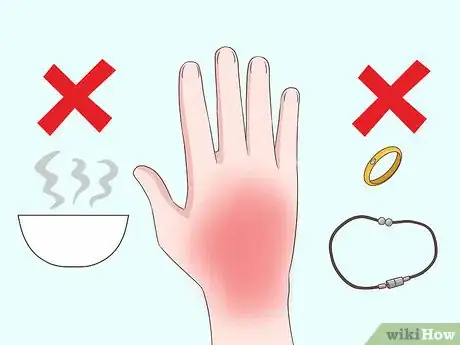

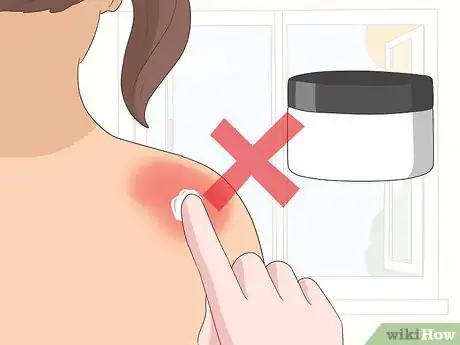

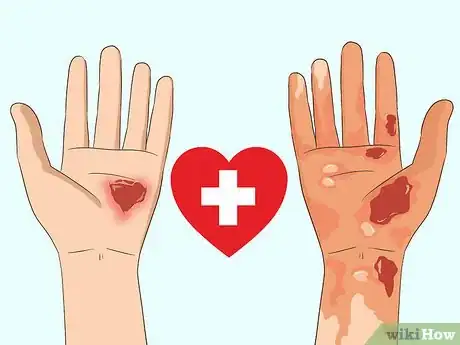
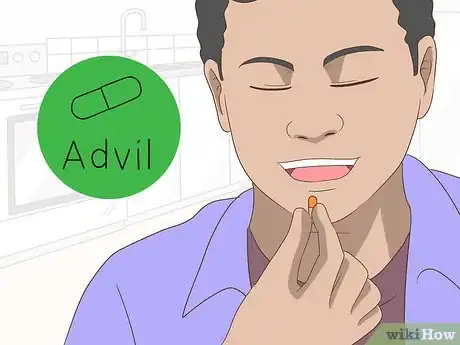
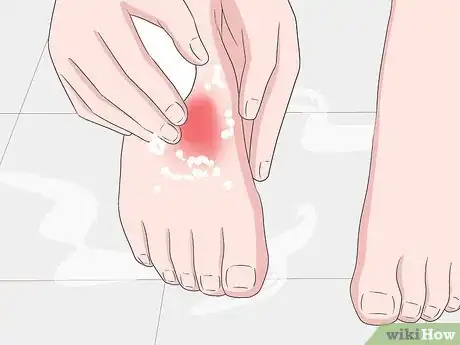
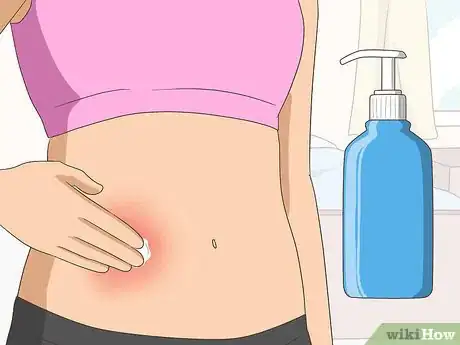
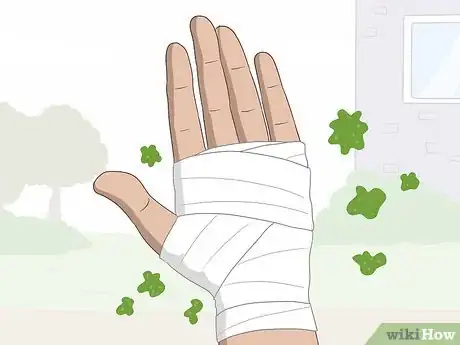


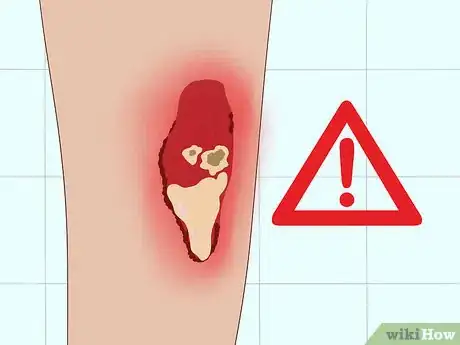
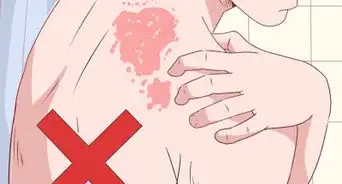





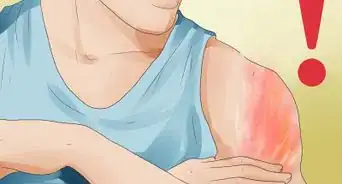

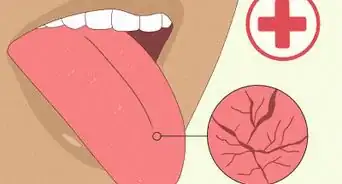

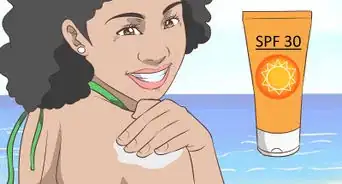
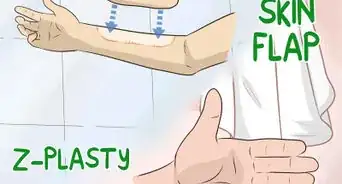

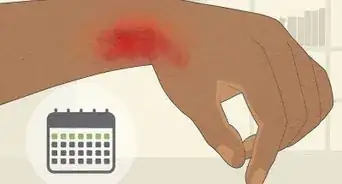








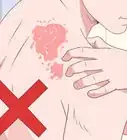

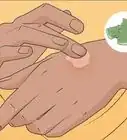




































Medical Disclaimer
The content of this article is not intended to be a substitute for professional medical advice, examination, diagnosis, or treatment. You should always contact your doctor or other qualified healthcare professional before starting, changing, or stopping any kind of health treatment.
Read More...